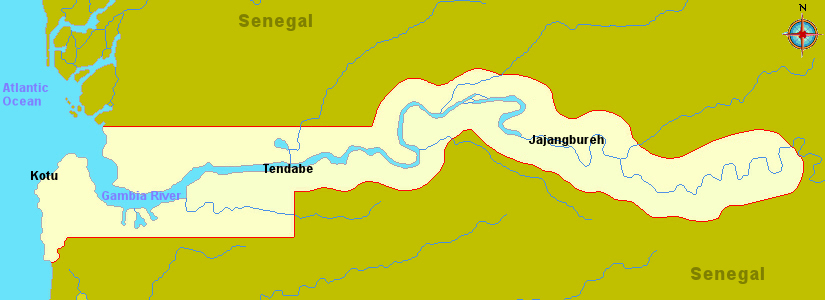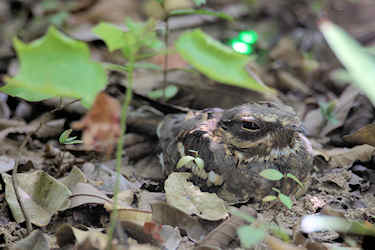The Gambia

Historie
Arab traders provided the Gambia's first written accounts in the 9th and 10th centuries. During the 10th century,
Muslim merchants and scholars established communities in several West African commercial centres. Both groups
established trans-Saharan trade routes, leading to a large trade in slaves, gold, ivory (exports) and manufactured goods,
etc. (imports).
At the beginning of the 14th century, most of what is today called Gambia was part of the Mali Empire.
The Portuguese reached this area by sea in the mid-15th century, and they began to dominate overseas trade. In
1588, the claimant to the Portuguese throne, António, Prior of Crato, sold exclusive trade rights on the Gambia
River to English merchants.
During the late-17th century and throughout the 18th century, the British Empire and the French Empire struggled
continually for political and commercial supremacy in the regions of the Senegal River and the Gambia River.
The British Empire occupied the Gambia when an expedition led by Augustus Keppel landed there—following the
Capture of Senegal in 1758.
The 1783 First Treaty of Versailles gave Great Britain possession of the Gambia River, but the French retained
a tiny enclave at Albreda on the river's north bank. This was finally ceded to the United Kingdom in 1856.
As many as three million slaves may have been taken from this general region during the three centuries that the
Transatlantic Slave Trade was operated. Traders initially sent slaves to Europe to work as servants until the
market for labour expanded in the West Indies and North America in the 18th century.
In 1807, the United Kingdom abolished the slave trade throughout its Empire. It also tried, unsuccessfully, to end the
slave trade in the Gambia.
An agreement with the French Republic in 1889 established the present boundaries. The Gambia became a British Crown
Colony called British Gambia, divided for administrative purposes into the colony (city of Banjul and the
surrounding area) and the protectorate (remainder of the territory). The Gambia received its own executive and
legislative councils in 1901, and it gradually progressed toward self-government. Slavery was finally abolished in
1906.
After World War II, the pace of constitutional reform increased. Following general elections in 1962, the United
Kingdom granted full internal self-governance in the following year.
The Gambia achieved independence on 18 February 1965, as a constitutional monarchy within the Commonwealth of
Nations.
On 24 April 1970, Gambia became a republic within the Commonwealth, following a second referendum. Prime Minister
Sir Dawda Kairaba Jawara became the Head of State.
I visited The Gambia in november 2012.
On that trip i have seen
Kotu
Tendabe
Jajangbureh
Please let me know when you're having questions.
i would be pleased to help you.
Things to do and other tips
